How I use a planner to stay organized
I’ve tried a few different techniques to stay organized and productive, but by far writing things down by hand in a planner is best for me. It helps me to break down big tasks into smaller to dos over a few days. I can visually see all of the things I need to get done and feel like I have a grasp over them all. Plus, you just can’t beat the feeling of physically crossing something off your list.
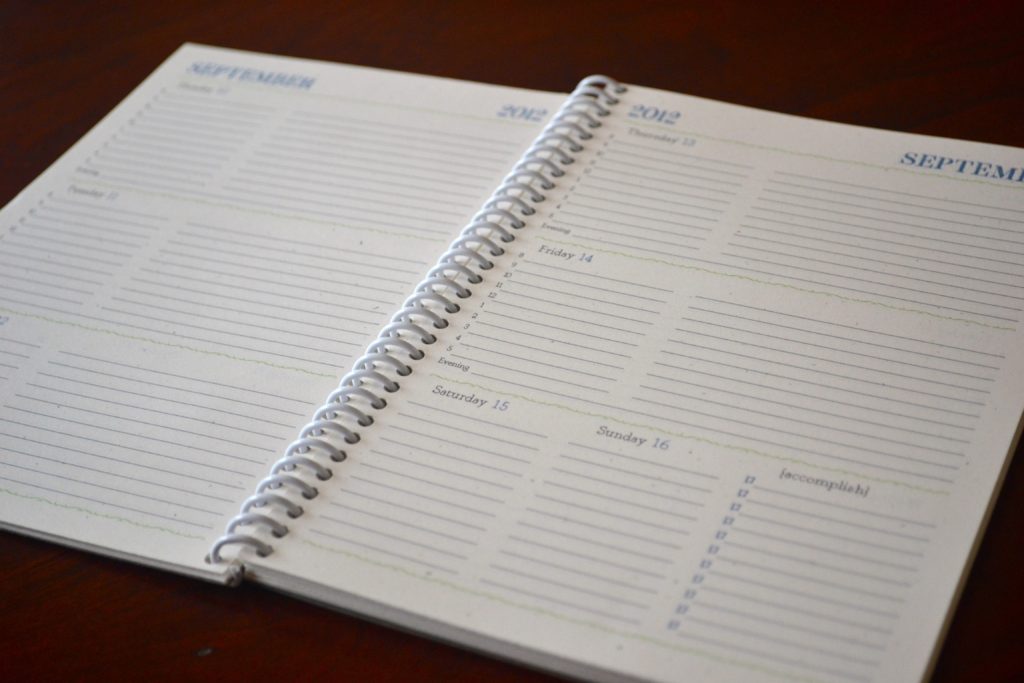
After at least 15 years of using a planner, I finally have a system that works for me. What started as a place to keep track of my homework has morphed into how I organize my entire life. I use my planner to keep track of my work tasks, daily errands and chores, habits, and personal goals.
How to Use a Planner
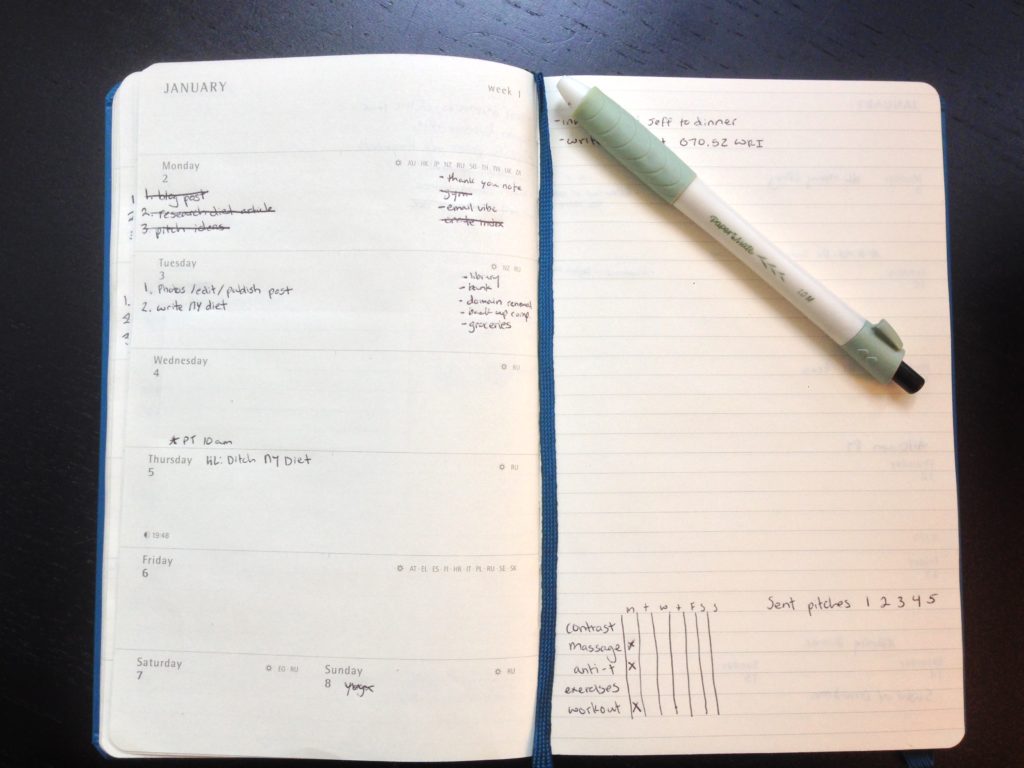
1. Plan Big Three
Each day I set aside my main three (or fewer) tasks for the day. These are my main priorities that need to be done before I can call it a day. If I only do these three tasks, my day is a success. My last work task for the day is writing out what needs to be done the next day.
2. To Do List
Laundry, quick emails, and other lower priority tasks go to the side of my big three. In theory I should do my big three before diving into these quick to dos, but in general I tend to sprinkle them in between.
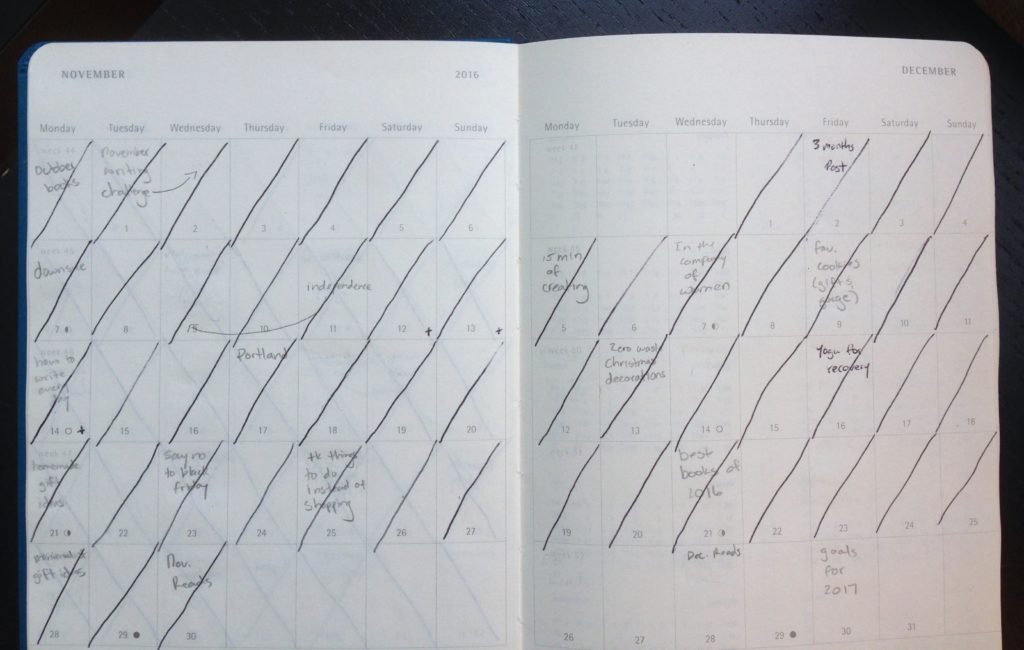
3. Monthly Editorial Calendar
For years I would hand draw a calendar for my blog in a lined notebook. It was tedious and didn’t make it easy for me to actually sit down and plan out my posts for the month. Now all of my tasks are in one place, and I can quickly flip to the front of my planner to see what I have coming up for the blog.
4. Deadlines and Dates
Meetings, appointments, and deadlines all have a home (and a symbol) in my weekly planner. While I also have all of these in a digital calendar, I find it really helpful to have it written out. I can easily take them into consideration when I’m planning my tasks and priorities.
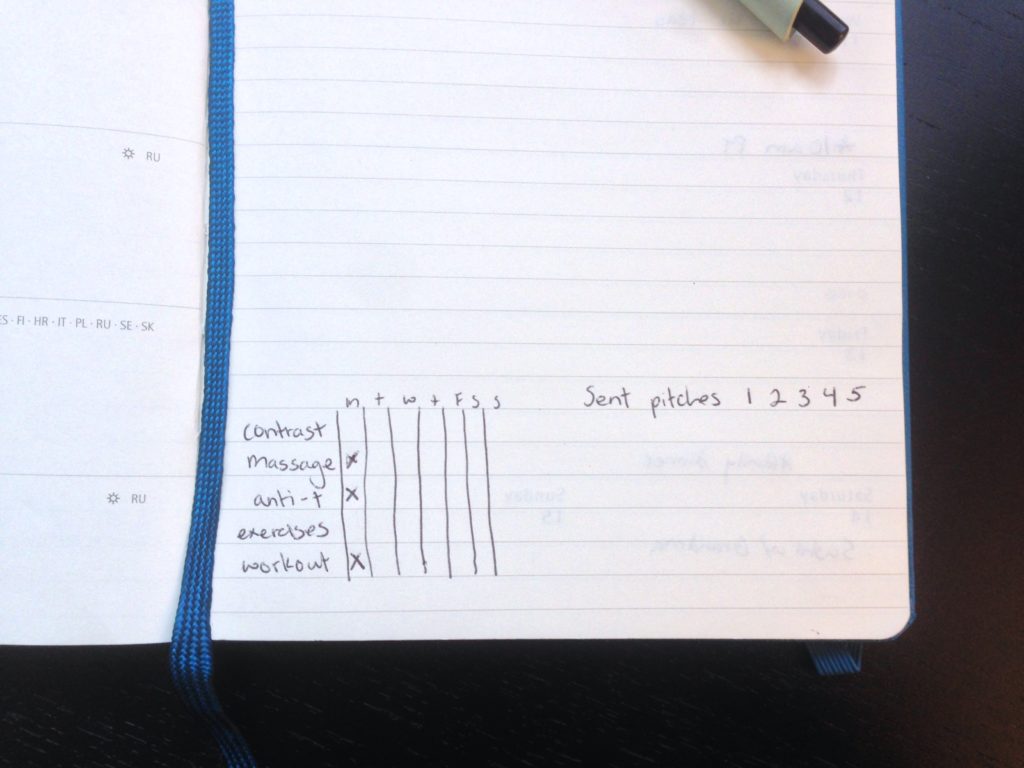
5. Habit Tracking
There are so many great ways to track habits. But I find I won’t actually mark it as complete (or do it at all) if my tracker isn’t front and center. Each week I hand draw my own habit tracker right into the weekly spread. Lately I’ve been tracking habits related to my ankle physical therapy including how often I contrast bath, do scar tissue massage, eat or drink foods high in anti-inflammatories, and other ankle-related tasks.
This is a great way to track multiple habits, but there are so many ways you could do it. You could highlight the days you completed your main habit (or New Year’s resolution), put a mark on each day, have a symbol you draw on the day when you’re done, or create a little logbook style like I have.
6. Sketch It Out
In college I got into the habit of planning out my priorities and to dos for an entire week at a time. While this was helpful for me to plan out when I needed to get started on things and to space out my workload, it was terrible for actually getting it done. If I didn’t finish something it caused catastrophe.
After years spent working off of yesterday’s (or last week’s) to do list, I finally learned how to frame out my big projects and take it a day at a time. These days I will take a big project and break it down into individual tasks that have to get done. I then add them to do my to do list one day at a time so I have room to move them from one day to another if things aren’t chugging along perfectly.
This technique is key for my freelance writing assignments. I will have anywhere from 5-10 articles due in a month. At the start of the month I sit down and roughly sketch out when I will do each step for each article so I don’t get overwhelmed or miss a deadline.
Because this process is messy and constantly shifting, I use a piece of scratch paper so I can cross things off as I go and rewrite them as necessary. My rough frame lives in the back pocket of my planner, but you can also include it in the notes section. Or you know, use a pencil.
7. Move It Forward
Any main priority tasks that don’t get completed are automatically the top priority for the next day. Sometimes I just don’t realize how long a task will take me and my top three for the day are really more than I can tackle. Instead of feeling like a failure for not getting it all done, I just move it forward to the next day.
There are exceptions to this rule. I will always meet hard deadlines. Typically I have it all planned out so I’m not doing anything last-minute, but things happen.
8. Set Yourself Up for Success
Like most people, I could easily write out 20 things that I want to get done each day, but that’s never going to happen. I am strict with only having three top tasks for the day. No matter how many times I try it, four isn’t realistic. I just can’t get it all done.
There are days where three is way too many as well. Know what your priority will take (time, effort, energy, focus, someone else’s time, etc.) and plan accordingly. If something is going to take you six hours to complete, don’t add two more priorities to the list under it. You’ve already filled up your day with your main task.
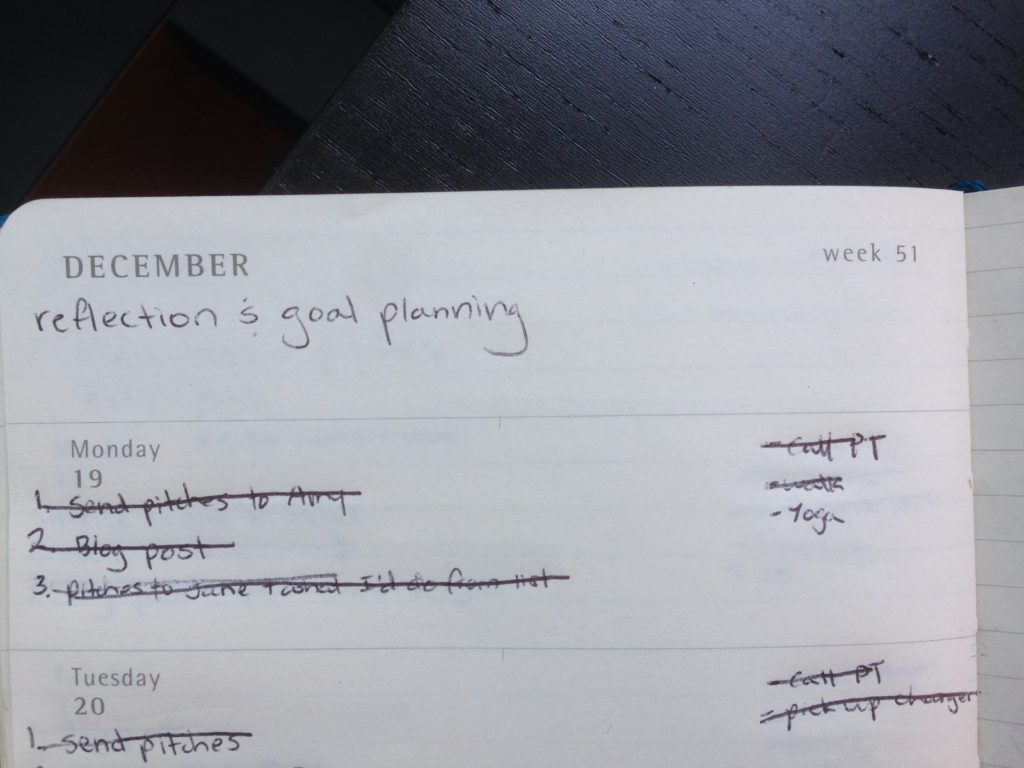
9. Set Goals or Intentions
I put my goals for the week front and center so they are always on my mind. Sometimes these goals are big projects I want to tackle that week or my general focus for the week (like reflection, goal planning, inspiration gathering). I don’t always have an explicit goal for each week outside of just getting my normal tasks done. On those weeks I just leave the space blank.
Planner
The planner I use isn’t special. I searched for hours (I wish I was exaggerating) for a sustainable, ethical notebook that did everything I wanted, but I ultimately came up short. I’m currently using Moleskin’s 18 month, weekly planner. In the past I used a handmade, 100 percent recycled paper planner from Etsy.
Related:
I haven’t tried bullet journaling, but I am fully intrigued by it. I mean look at these examples! The colors and perfect penmanship make me happy. If only I knew how to draw (and could write legibly).













